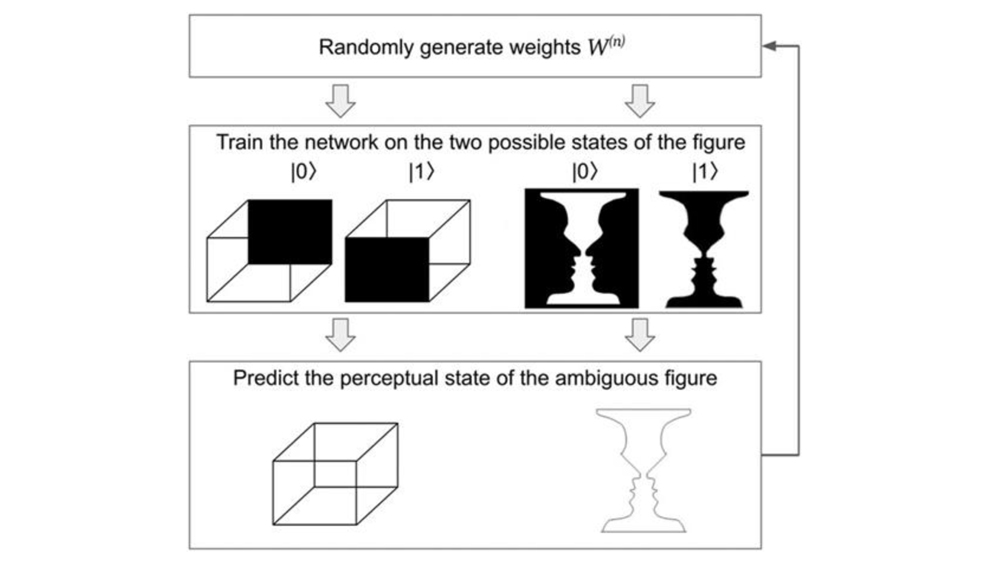
We love a good optical illusion here at Creative Bloq. Until now, we've also been strangely happy in the knowledge that only humans (and cats) can see them while computers can't. It seemed a nice way of separating man man and machine. A love of optical illusions was part of what made us human. Alas, artificial intelligence has come along to change everything.
We've seen already that AI can make optical illusions. But now a researcher has created an AI system that can also perceive them, mimicking the way that humans interpret complex optical illusions.

Computer vision is normally unable to simulate psychological and neurological aspects of human vision, including our ability to recognise patterns. But a study published in APL Machine Learning by AI researcher Ivan Maksymov from the Charles Sturt University in Australia describes an AI that achieves that through "quantum tunneling."
The system's been given the catchy moniker "quantum-tunneling deep neural network". As that name suggests, it combines quantum tunneling with a deep neural network, which is a series of machine learning algorithms inspired by the structure and function of the brain.
And quantum tunneling? Here things get a bit wild. The phenomenon happens when a subatomic particle like an electron passes through an impenetrable barrier. That might sound impossible, but subatomic particles like light can behave as a wave. When not directly observed, they're not in any fixed location so there's a small probability that it's on the other side of the barrier. With enough subatomic particles present, some will "tunnel" through said barrier.
The AI model was trained on two classic optical illusions: the Necker Cube and Rubin’s Vase. The model was repeatedly shown the images, which were altered slightly each time they were put through the quantum tunneling stage. The deep neural network processed the variations and chose which perspectives they matched, mimicking how the human brain switches between perspectives when viewing an optical illusion.
"When we see an optical illusion with two possible interpretations (like the ambiguous cube or the vase and faces), researchers believe we temporarily hold both interpretations at the same time, until our brains decide which picture should be seen. This situation resembles the quantum-mechanical thought experiment of Schrödinger's cat," Maksymov writes in a post on TechXplore.
Daily design news, reviews, how-tos and more, as picked by the editors.
Maksymov thinks the research could have practical benefits, possibly helping raise awareness of disorientation and the misinterpretation of flight instruments for airline pilots and astronauts. He thinks the algorithm used could also help detect mild cognitive impairments and dementia.
In other AI news, an autonomous AI art sold at Sotheby's and London's V&A has hosted an AI art projection created from the brainwaves of human artists.

Joe is a regular freelance journalist and editor at Creative Bloq. He writes news, features and buying guides and keeps track of the best equipment and software for creatives, from video editing programs to monitors and accessories. A veteran news writer and photographer, he now works as a project manager at the London and Buenos Aires-based design, production and branding agency Hermana Creatives. There he manages a team of designers, photographers and video editors who specialise in producing visual content and design assets for the hospitality sector. He also dances Argentine tango.
